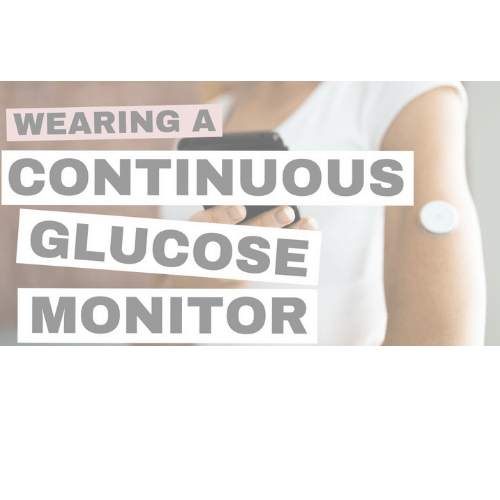Are you looking for a way to turn back the clock on your prediabetes diagnosis? Check out our guide to reversing prediabetes so you know how to reverse prediabetes and get your health back on track!
Each of these eight strategies holds significant value. To achieve the best results, it is highly recommended to utilize all eight strategies collectively.
We understand how difficult it can be to manage prediabetes risk factors and keep it from progressing to full-blown type 2 diabetes. That’s why we’re here to help with our comprehensive guide on how to reverse prediabetes. These same 8 strategies are the foundation to reverse diabetes type 2.
This guide will provide you with all the information you need to get started on your journey to getting rid of prediabetes. We’ll discuss the best diets, exercises, and lifestyle changes you can make to help you control your level of blood glucose and reduce your risk of developing type 2 diabetes. Additionally, we’ll provide tips on how to stay motivated and on track with your goals now that you will know what it will take to reverse prediabetes.
As a Functional Medicine practitioner with 30 years of experience and board certification in Family Medicine, I have witnessed the steady rise in prediabetes and type 2 diabetes cases. Prediabetes is a disease related to lifestyle habits that is, unfortunately, akin to the Standard American Diet - SAD indeed. It is not an irreversible condition, although it can be difficult to combat without the right knowledge. Without changes, people with prediabetes will very often develop type 2 diabetes.
Medical school did not provide me with the tools to reverse chronic diseases, especially not prediabetes or type 2 diabetes. The reality is that, in most (if not all) cases, these conditions can be reversed if you know the appropriate steps and follow them consistently.
Strategy 1: Understanding Prediabetes

What is Prediabetes?
Prediabetes is a health condition that many people might have, but they don't know it. In this blog post, we will learn about what prediabetes is, what causes it, and what can happen if we don't take care of it.
Prediabetes is when a person's blood levels of glucose are higher than they should be, but not high enough to be called diabetes. Blood sugar is the amount of sugar in your blood, and it gives your body energy. When you have prediabetes, your body has a hard time using your blood sugars the right way. This is called insulin resistance.
How is Prediabetes Diagnosed?
Prediabetes is diagnosed through blood tests that measure blood glucose levels. There are three primary tests used to diagnose prediabetes:
1. Fasting Plasma Glucose (FPG) test: This test measures how much sugar you have in your blood after an overnight fast (typically 8 hours without eating). If your fasting levels of B.G. are between 100 mg/dL (5.6 mmol/L) and 125 mg/dL (6.9 mmol/L), you may be considered to have prediabetes.
2. Oral Glucose Tolerance Test (OGTT): This test measures blood sugar levels before and 2 hours after consuming a glucose-rich drink. If your glucose (B.G.) level is between 140 mg/dL (7.8 mmol/L) and 199 mg/dL (11.0 mmol/L) 2 hours after drinking the solution, you may be considered to have prediabetes.
3. Hemoglobin A1C (HbA1c) test: This test measures your average blood levels of glucose over the past 2-3 months. It provides an indication of how well your body is managing glucose. If your HbA1c level is between 5.7% and 6.4%, you may be considered to have pre-diabetes. Hemoglobin A1C appears to be the most common was of testing for pre-diabetes now. It is the easiest because you don't have to be fasting and you don't have to drink the awful syrup drink. You just have your blood drawn.
What Causes Pre-diabetes?
Pre-diabetes happens when your body can't use insulin correctly. Insulin is like a key that helps sugar get into your body's cells so they can use it for energy. When you are developing prediabetes, the insulin in your body doesn't work as well as it should (called insulin resistance), and the sugar stays in your blood instead of going into your cells.
Some major risk factor items for pre-diabetes are:
- Eating too many unhealthy foods, like sugary snacks and drinks
- Not getting enough exercise
- Having a family history of diabetes that gives a genetic predisposition
What Can Happen if Prediabetes is Not Treated?
If you don't take care of your prediabetes disease control of your risk factors, you can develop type 2 diabetes. Type 2 diabetes mellitus is a more serious health problem, and it can cause higher risk for other health issues like:
- Heart disease, including heart attacks
- Kidney problems, including kidney failure
- Nerve damage
- Eye problems
It's crucial to acquire knowledge on how to prevent prediabetes and taking proactive measures to avoid developing type 2 diabetes. The prevalence of pre-diabetes and type 2 diabetes is significantly higher among young adults compared to previous times. Even elementary and middle school children are experiencing pre-diabetes or type 2 diabetes, requiring them to visit a pediatric endocrinologist.
The good news is that pre-diabetes is reversible! With the right knowledge, consistent effort, and a positive mindset, you can regain control of your health and stave off the progression of this condition.
How Does Metabolic Syndrome Relate to Prediabetes?
They are closely related. In fact, metabolic syndrome is one of the most significant risk factors for prediabetes and type 2 diabetes.
Metabolic syndrome is a high risk state that is a cluster of conditions that occur together, including high blood pressure, high blood sugar levels, excess body fat around the waist, and abnormally high cholesterol levels. These conditions can increase your risk of developing heart disease, stroke, and diabetes.
Prediabetes, on the other hand, is a condition where your sugar levels are higher than normal, but not high enough to be considered diabetes. People with prediabetes have an increased risk of developing diabetes type 2.
Many of the risk factors for metabolic syndrome and prediabetes are the same, including being overweight or obese, having a sedentary lifestyle, and having a family history of diabetes. Both conditions can also be managed and prevented through lifestyle changes, such as regular exercise, healthy eating habits, and weight loss. If you have metabolic syndrome or prediabetes, it's important to work with your healthcare provider to manage these conditions and reduce your risk of developing diabetes and other related health problems.
Strategy 2: The Importance of Diet

Diet is a critical factor when it comes to turning back pre-diabetes. It's time to say goodbye to the Standard American Diet (SAD) and hello to a more balanced, nutrient-rich way of healthy eating. One of the most important lifestyle changes that can help reverse pre-diabetes is a healthy diet.
Eating the right foods can help control sugar levels in your blood, reduce inflammation, and promote weight loss, all of which are important factors in reversing pre-diabetes. Here are some tips for dietary intake changes from functional medicine doctors that people with prediabetes can use to turn it around and prevent diabetes type 2.
Focus on whole, nutrient-dense foods.
When it comes to correcting pre-diabetes, the quality of the food you eat matters just as much as the quantity. Focus on eating whole, nutrient-dense foods like fruits, vegetables, whole grains, lean protein, and healthy fats. These foods are packed with vitamins, minerals, fiber, and other important nutrients that can help keep blood glucose levels stable.
Opt for low-glycemic foods: Low-glycemic foods release glucose slowly and steadily into your bloodstream, helping to prevent sugar spikes. Examples include non-starchy vegetables, whole grains, legumes, and certain fruits like berries and cherries.
Avoid processed and refined foods.
Prediabetes patients should avoid processed and refined foods. These foods are often high in added sugars, unhealthy fats, and refined carbohydrates, all of which can contribute to high levels of glucose in your blood and inflammation. Instead, make dietary changes to choose whole, minimally processed foods that are as close to their natural state as possible.
Watch your carbohydrate intake.
For pre-diabetes patients, it is important to watch your carbohydrate intake and choose carbohydrates that are high in fiber and low in sugar. Examples include whole grains, fruits, and vegetables. Limit your intake of white bread, pasta, pastries, and sugary beverages.
Eat protein with every meal.
Eating protein with every meal can help control levels of sugar in your blood by slowing down the absorption of carbohydrates. Choose lean protein sources like chicken, fish, beans, and nuts, and aim to have a source of protein at every meal and snack.
Include healthy fats in your diet.
Healthy fats, like those found in nuts, seeds, avocados, and fatty fish, can help improve insulin sensitivity and reduce inflammation. Including these fats in your diet can help control blood sugar levels and promote overall health.
Diet can be thought of as nutrition therapy, and is a key component of any pre-diabetes reversal plan, and following the tips above can help control your blood sugar level, reduce inflammation, and promote overall health.
Strategy 3: The Power of Regular Exercise

One of the most powerful tools in your arsenal against prediabetes is choosing regular exercise over a sedentary lifestyle. Being physically active will improve insulin sensitivity and lower levels of glucose in your blood, and it can also support weight management and boost overall health.
You don't have to be a gym rat to reap the benefits of exercise. In fact, incorporating short bouts of physical activity throughout the day, also known as "exercise snacks," can be just as effective as longer workouts.
To start, aim for at least 150 minutes of moderate-intensity aerobic exercise per week, such as brisk walking, cycling, or swimming. But, don't feel like you have to do it all at once. Breaking up your exercise into smaller chunks throughout the day can be just as effective. Take a brisk walk during your lunch break, do some squats or lunges while you're waiting for dinner to cook, or take a quick dance break during a commercial break of your favorite show.
In addition to aerobic exercise, incorporating strength training exercises two to three times per week can also be beneficial for correcting prediabetes. Building and maintaining muscle mass can help improve insulin sensitivity and promote weight management. Aim to incorporate strength training exercises focusing on major muscle groups like the legs, back, and chest.
To make physical activity more enjoyable, find activities that you enjoy, such as hiking, dancing, or playing a sport. Incorporating movement into your daily life, such as taking the stairs instead of the elevator or walking or biking to work, can also help reverse pre-diabetes.
It's important to consult with a healthcare provider before getting started. They can help determine the right type and amount of exercise regularly for your individual needs, and can help monitor your progress over time.
Find enjoyable ways to move your body and make exercise a part of your daily life.
Strategy 4: The Impact of Attaining a Healthy Weight

One way to help reverse prediabetes is to achieve body weight in a healthy range.
Carrying excess weight, especially around the abdomen, can contribute to insulin resistance and increase your risk of developing type 2 diabetes. Minimal weight loss, even losing just 5-7% of your body weight can significantly improve your body's ability to use insulin and lower blood sugar levels.
Here's a table illustrating some example weights. Values are rounded to the nearest pound.
| Initial Weight (lbs) | 5% Weight Loss (lbs) | New Weight after 5% Loss (lbs) | 7% Weight Loss (lbs) | New Weight after 7% Loss (lbs) |
|---|---|---|---|---|
| 140 | 7 | 133 | 10 | 130 |
| 160 | 8 | 152 | 11 | 149 |
| 180 | 9 | 171 | 13 | 167 |
| 200 | 10 | 190 | 14 | 186 |
| 220 | 11 | 209 | 15 | 205 |
| 240 | 12 | 228 | 17 | 223 |
| 260 | 13 | 247 | 18 | 242 |
| 280 | 14 | 266 | 20 | 260 |
| 300 | 15 | 285 | 21 | 279 |
| 320 | 16 | 304 | 22 | 298 |
Remember that weight loss should be approached in a healthy and sustainable manner. Consult with a healthcare professional or registered dietitian for personalized guidance on your weight loss journey.
Here are 6 actionable strategies that can help a typical person with prediabetes to lose weight:
- Monitor portion sizes: Use smaller plates, bowls, and cups to help control portion sizes and avoid overeating.
- Keep a food diary: Keeping a food diary can help you track what you're eating and identify areas where you may need to make changes.
- Stay hydrated: Drinking plenty of water can help control appetite and promote weight loss.
- Reduce sedentary behavior: Limit sedentary activities like sitting or lying down for extended periods. Engage in more physical activity. Stand up, stretch, or take a short walk every hour.
- Seek support: Seek support from friends, family, or a healthcare provider to help you stay on track and make lasting lifestyle changes.
- Track your progress and take advantage of the high tech gadgets, like a smart watch, a smart scale, and apps like Noom.
Achieving a healthy weight can help reverse prediabetes and reduce the risk of developing type 2 diabetes and other health problems. Remember, making sustainable lifestyle changes takes time, so be patient and seek support along the way.
Strategy 5: Managing Stress to Help Reverse Prediabetes

Stress can make prediabetes worse. But don't worry! There are many things you can do to reduce the impact of stress on your life. We'll discuss 10 actionable tips that can help you on your journey to a healthier lifestyle.
1. Take a deep breath: Breathing deeply can help you relax and lower stress levels. Try inhaling for 4 counts, holding your breath for 4 counts, and exhaling for 4 counts. Repeat this a few times to help you calm down.
2. Get moving: Exercise is a fantastic way to reduce stress and improve your overall health. Aim for at least 30 minutes of moderate exercise, like brisk walking or dancing, at least five days a week. Don't forget to have fun while you're at it!
3. Catch some Z's: A good night's sleep is essential for managing stress and keeping your blood sugar levels in check. Aim for 7-9 hours of sleep per night and create a bedtime routine that helps you wind down. See Strategy 6 for more on improving your sleep.
4. Eat a balanced diet: Eating a variety of healthy foods, including unprocessed grains, lean protein, fruits, and vegetables, can help keep your levels of sugar in your blood stable and reduce stress. Avoid sugary snacks and drinks, as these can cause your sugar to spike.
5. Connect with others: Talking to friends and family can help you cope with stress. Surround yourself with people who support and encourage you on your journey to better health.
6. Practice mindfulness: Mindfulness techniques, like meditation and yoga, can help you stay present and focused. By learning to be more aware of your thoughts and feelings, you can better manage stress and prevent it from affecting your health.
7. Laugh it off: Laughter is a natural stress-reliever. Watch a funny movie, read a humorous book, or spend time with friends who make you laugh. A good chuckle can go a long way in reducing stress.
8. Set realistic goals: It's important to have goals for your health, but make sure they're realistic and achievable. Break them down into smaller steps and celebrate your progress along the way.
9. Learn to say no: Over-committing can lead to stress and exhaustion. Be mindful of your limits and say no to tasks or activities that may cause unnecessary stress.
10. Seek professional help: If you're struggling with stress, don't hesitate to seek help from a professional, like a therapist or counselor. They can provide guidance and support as you work on managing your stress and reversing prediabetes.
Remember, managing stress is a key component in reversing prediabetes. By practicing these 10 actionable tips, you can reduce the impact of stress on your life and improve your overall health. Take one step at a time, and before you know it, you'll be on your way to a healthier, happier you!
Strategy 6: Prioritizing Sleep

Sleep is like a magic potion for our bodies. When we sleep, our bodies get to work repairing and rejuvenating themselves. Our brains use this time to organize our thoughts and memories, while our bodies heal and grow. Sleep also plays a significant role in managing our hormones, including the ones that control our blood sugar levels.
How Sleep Helps Prediabetes
Here are three ways that getting enough sleep can help:
- Balancing Hormones: Sleep helps our bodies manage hormones like insulin, which helps regulate our plasma glucose. When we don't get enough sleep, our insulin levels can become unbalanced, leading to higher levels of plasma glucose. By prioritizing sleep, we can help our bodies maintain enough insulin function, which can help prevent or correct prediabetes.
- Reducing Stress: Stress can wreak havoc on our bodies, and one of the ways it does this is by increasing plasma glucose levels. When we're well-rested, we're better equipped to handle stress, which can help keep our sugars levels in check.
- Supporting Weight Within a Healthy Range: Lack of sleep can also cause weight gain, which is a risk factor for prediabetes. When we're tired, we tend to crave unhealthy foods, and our bodies don't burn calories as efficiently. By getting enough sleep, we can better manage our weight and reduce our risk of prediabetes.
Tips for Better Sleep
Now that we know how sleep can help overcome prediabetes, let's talk about some tips for getting better sleep:
- Establish a Routine: Try to go to bed and wake up at the same time every day, even on weekends. This will help your body establish a natural sleep-wake cycle.
- Create a Sleep-Friendly Environment: Make sure your bedroom is cool, dark, and quiet. You can use blackout curtains, white noise machines, or earplugs to block out any distractions.
- Wind Down Before Bed: Take some time to relax before you go to sleep. Try reading a book, taking a warm bath, or practicing deep breathing exercises.
- Limit Screen Time: The blue light from screens can mess with your body's natural sleep-wake cycle. Try to avoid using electronic devices at least an hour before bed.
- Watch What You Eat and Drink: Avoid large meals, caffeine, and alcohol close to bedtime, as they can interfere with your sleep.
By prioritizing sleep, we can help our bodies balance hormones, reduce stress, and maintain a suitable weight.
Strategy 7: Monitor Your Blood Sugar

Why Monitor Your Blood Glucose (B.G.)?
Monitoring your B.G. helps you see how your body responds to the foods you eat, exercise, and other factors. By keeping an eye on your B.G. levels, you can make better choices to keep those levels in a healthy range.
How to Monitor Your Blood Sugar
To monitor your sugar, you'll need a bloo meter, test strips, and a lancet device to prick your finger. Here's a step-by-step guide to checking your B.G.:
- Wash your hands: Make sure your hands are clean before you start.
- Insert a test strip: Place a test strip into the B.G. meter.
- Prick your finger: Use the lancet device to prick the side of your fingertip.
- Apply the blood: Touch the test strip to the drop of blood, allowing it to absorb the blood.
- Read the result: Your meter will display your glucose level in a few seconds.
When to Check Your Sugar Levels
If you have prediabetes, it's a good idea to check your B.G. levels regularly. Here are some times when you might want to check your blood sugar:
- Before meals
- 2 hours after meals
- Before and after exercise
- Before bedtime
Remember to talk to your healthcare provider about when and how often you should be checking your blood sugar.
Understanding Your Blood Sugar Results
Your blood sugar results will help you and your healthcare provider make a plan to keep your levels in a healthy range. Here are some general guidelines for healthy blood sugar levels:
- Fasting (before meals): 70-130 mg/dL
- 2 hours after meals: Less than 180 mg/dL
Keep in mind that these numbers may vary depending on your age group and individual needs, so always talk to your healthcare provider about your specific blood sugar goals.
Taking Action
Once you start monitoring your blood sugar, you can take action to keep your levels in check.
Introducing Continuous Glucose Monitoring (CGM)
Traditional blood sugar monitoring involves pricking your finger and using a glucose meter. While this method is effective, it can be time-consuming and inconvenient. That's where CGM comes in!
CGM is a wearable device that measures your blood sugar levels continuously throughout the day and night. It uses a tiny sensor inserted under your skin to monitor your glucose levels, and it sends the data to a small device or smartphone app. This means you can easily track your blood sugar levels in real-time without the need for constant finger pricks.
Benefits of CGM for Reversing Prediabetes
Here are some of the advantages of using CGM to help reverse prediabetes:
- Real-time data: CGM provides you with continuous data, making it easier to spot trends and adjust your lifestyle choices accordingly.
- Fewer finger pricks: With CGM, you'll need to prick your finger less often, making blood sugar monitoring more comfortable and convenient.
- Better understanding of your body: CGM helps you see how your body reacts to different foods, exercise, and other factors, which can help you make more informed decisions about your health.
- Improved blood sugar control: By continuously monitoring your blood sugar levels, you can take action to keep them in a healthy range, ultimately helping to reverse prediabetes.
Taking Action with CGM
Once you start using CGM, you can take action to keep your blood sugar levels in check.
Final Thoughts on Continuous Glucose Monitoring
Continuous Glucose Monitoring (CGM) can be a powerful tool for those looking to reverse prediabetes. By providing real-time data and reducing the need for finger pricks, CGM makes it easier than ever to monitor your blood sugar levels and take control of your health. Talk to your healthcare provider about whether CGM is right for you and start your journey to a healthier lifestyle today! I highly recommend the continuous glucose monitoring.
Strategy 8: Medical Support

Staying in touch with your healthcare provider is essential for managing prediabetes. Keep track of your progress, share your concerns, and celebrate your successes with your medical team. They can help you stay on track and provide personalized advice tailored to your unique situation.
Conclusion
Reversing prediabetes is a difficult but achievable goal. By making simple lifestyle changes such as eating a balanced diet, exercising regularly, and managing stress, you can improve your health and reduce your risk of developing type 2 diabetes. While it’s important to make changes to your lifestyle, it’s also essential to monitor your progress and consult with a healthcare professional if you have any concerns.
By taking the right steps, you can reverse prediabetes and improve your overall health. With the right mindset and the right approach, you can make lasting changes that will have a positive impact on your health and well-being.


